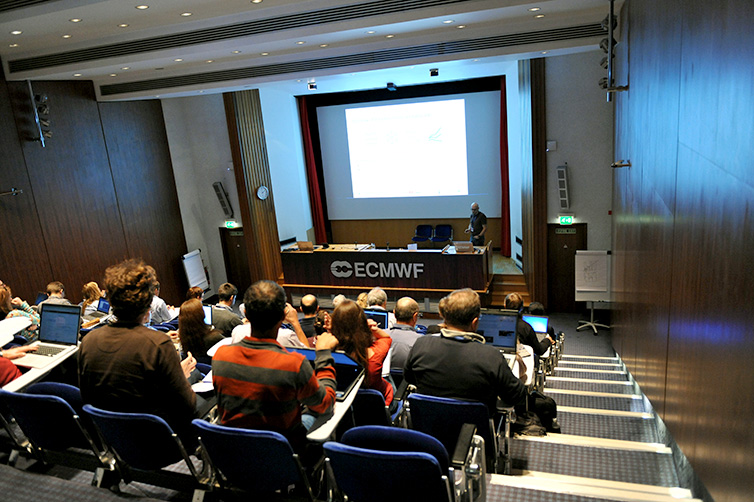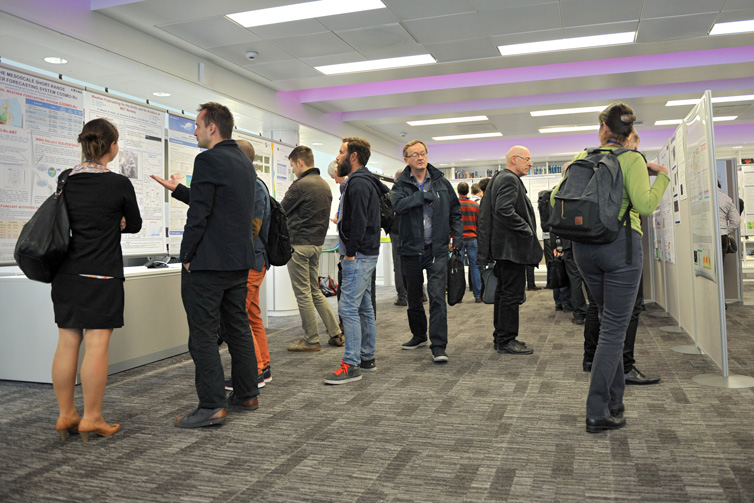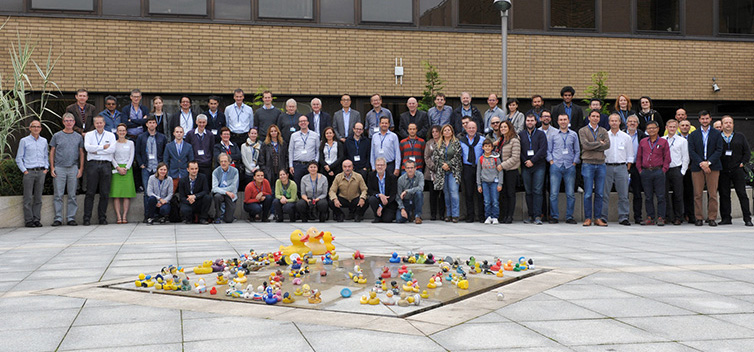

As limited-area models move to ever higher resolution, they approach the point where relatively small-scale weather phenomena, such as convective clouds, can be resolved by the model. (Photo: Thinkstock/iStock/majo1122331)
Over 90 scientists from European national meteorological services (NMSs) and ECMWF came together at the Centre from 2 to 5 October 2017 to talk about convection and other topics in limited-area modelling.
Weather forecasts for many countries do not rely only on global predictions, such as those produced by ECMWF’s Integrated Forecasting System (IFS).
Instead they are produced using special high-resolution models to make more detailed predictions for specific regions.
These limited-area models (LAMs) use global model output as boundary conditions.
Every year European LAM and short-range forecast experts come together to discuss a special topic and to exchange information in their areas of expertise.
The special topic at the joint 39th EWGLAM and 24th SRNWP EUMETNET meeting held at ECMWF was ‘convection’.

The four-day meeting included a range of plenary sessions as well as separate working group sessions.
Towards higher resolution
Small-scale processes such as convection cannot be resolved by today’s global models. For example, ECMWF’s high-resolution forecast has a grid spacing of 9 km. This is far too large to simulate phenomena such as individual thunderstorms.
LAMs, on the other hand, aim to resolve some of these processes by increasing the resolution to a grid spacing of a couple of kilometres or less.
“Resolution is a hot topic with some models going down to hundreds of metres in some areas,” says Balázs Szintai, the EUMETNET C-SRNWP project manager.
ECMWF’s Strategy calls for a 5 km global ensemble by 2025. This means that ECMWF, too, is moving into the ‘grey zone’ where an increasing number of relatively small-scale processes can be resolved.
“It was good for the meeting to take place at ECMWF since we can learn a lot from each other,” says Jeanette Onvlee from the Dutch national weather service, KNMI.
“As ECMWF moves towards higher resolution, it will encounter the same ‘grey zone’ issues that LAM modellers have been grappling with for some time,” she points out.

A poster session provided an opportunity to present the work under way in different NMSs and LAM consortia.
Regional priorities
Resolution is not the only issue on the agenda of Europe’s LAM modellers. Topics discussed at the meeting spanned the full range of research issues in numerical weather prediction, from using weather observations to atmospheric dynamics and model physics.
“High resolution is more important in some areas, such as the Alpine regions of Switzerland, than in others,” says Michael Baldauf from the German national weather service DWD.
“In the COSMO consortium, we want to invest in more ensemble members, including in data assimilation,” he adds. “We also need better snow models and a better representation of clouds.”
Dr Onvlee agrees that different regions have different needs. She points out that the HIRLAM consortium, for which she is the programme manager, comprises a number of Nordic countries.
“The Nordic countries put a lot of emphasis on the correct modelling of snow,” she says.

Balázs Szintai (left) is a scientist at the Hungarian national weather service (OMSZ) and the EUMETNET C-SRNWP programme manager. Jeanette Onvlee (centre) from KNMI is the HIRLAM programme manager and Michael Baldauf (right) from DWD is the coordinator of the COSMO working group on numerical aspects.
The planned merger between HIRLAM and the ALADIN consortium, which includes a number of Mediterranean as well as eastern European countries, will bring welcome synergies, she adds. “We have decided to merge because our competencies are complementary.”
Another player who arrived on the scene fairly recently is the Balkans-based SEECOP consortium. In addition, the UK runs its own limited-area model.
“The existence of several different models makes meetings such as this so important,” Dr Szintai says. “They enable us to exchange information and to learn from each other.”

The meeting was attended by over 90 scientists from across Europe.
